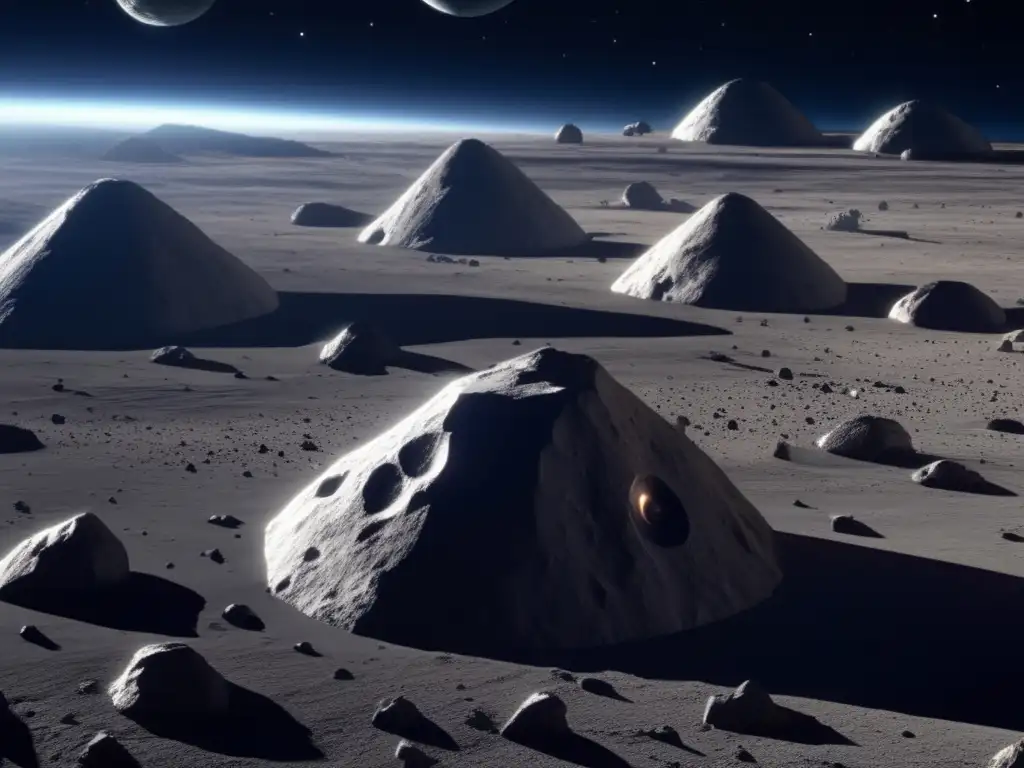Planet Protectors: The Strategies For Asteroid Defense

Introduction
Asteroids are celestial objects that have fascinated astronomers for centuries. These rocky bodies can range in size from tiny dust particles to massive objects over 400 km in diameter. Although most asteroids are harmless and have no chance of hitting Earth, some have the potential to cause catastrophic damage if they collide with our planet. To ensure the safety of humanity, planetary defense has become a critical part of space science.
Mapping Asteroids

Locating Potentially Dangerous Asteroids
One of the most vital actions within asteroid defense is determining which asteroids pose the greatest risks. This is achieved through mapping all known asteroids' trajectories and understanding their orbits in the Solar System. This approach enables researchers to identify objects whose paths may come close to intersecting Earth's orbit. This information allows for appropriate action to be taken to avoid collisions or minimize damage upon impact.
The Importance of Early Detection Systems
To avoid a catastrophic event, early detection is essential. It is crucial to identify dangerous asteroids and provide accurate predictions about their trajectory to help prevent them from colliding with Earth. The earlier an asteroid is detected, the more time there is to develop a defensive strategy, reducing the impact's physical and economic risks.
Using Telescopes for Asteroid Detection
Observing telescopes is instrumental in asteroid detection because they can detect near-Earth objects(NEOs). The telescopes' data enable researchers to obtain precise measurements of each asteroid’s size, trajectory, and distance from Earth. Fundamental facilities used for this purpose include the Pan-STARRS, ATLAS, and Catalina sky surveys. The data collected from these and other telescopes inform asteroid monitoring and defense plans.
Strategies for Planetary Defense

Deflection Techniques
When an asteroid nears Earth, deflection techniques become necessary to deflect the asteroid off its course. These techniques include detonating a nuclear weapon near the asteroid, changing its speed using solar sails, and gravity tractors. One of the most successful ways of deflecting asteroids involves gravity tractors where spacecraft orbits close to an asteroid. This approach works due to the gravitational force that will pull the asteroid slightly towards the spacecraft and alter its course.
The Kinetic Impactor Method
The kinetic impactor method involves colliding a spacecraft into the impactor. If an asteroid is relatively small and moves slowly, this method could prove successful in changing the asteroid's direction enough to prevent it from colliding with Earth. In 2022, a joint operation between the European Space Agency and NASA, known as the Asteroid Impact Deflection Assessment (AIDA), will test the kinetic impactor method on an asteroid target, demonstrating the feasibility of this approach.
The Gravity Tractor Method
The gravity tractor technique utilizes a spacecraft that approaches the asteroid and uses its gravity to pull the asteroid off its trajectory. The spacecraft's position and velocity enable it to correctly adjust the asteroid's path to avoid a collision with Earth. This technique is best suited for smaller asteroids since larger asteroids would require considerably more fuel to execute the maneuver.
Possible hazards and mitigations

Impact Hazards
If an asteroid impacts Earth, it could release massive amounts of energy, equivalent to that of a nuclear bomb. It could trigger wildfires, tsunamis, and earthquakes that could cause considerable damage and loss of life. To mitigate the impact, deflection strategies are critical to ensure that the asteroid does not collide with Earth.
Airburst Hazards
Airbursts occur when an asteroid explodes in the atmosphere due to the intense heat generated by friction. The heat causes the asteroid to break up into smaller fragments, which can then hit the ground as meteorites. Mitigation efforts include early detection to give adequate time for action and strategic planning; physical preparations include constructing shelters and evacuating people in the affected areas.
Tsunami Hazards
A large asteroid impact on a water body can generate a tsunami wave, resulting in significant destruction along the coastlines near affected areas. Mitigation techniques include early detection and evacuation plans for those living in low-lying areas. Developing an understanding of such hazards is necessary to implement effective mitigation strategies before events occur.
Frequently Asked Questions

-
What is planetary defense?
Planetary defense is the science and technology behind preparing and protecting Earth against possible asteroid impacts.
-
How do scientists detect asteroids?
Observing telescopes are used to identify asteroids based on their trajectory, size, and distance from Earth. The data obtained from these telescopes inform asteroid monitoring and defense plans.
-
What methods are available to deflect a dangerous asteroid?
Deflection techniques include detonating a nuclear weapon, solar sails, gravity tractors, and kinetic impactors.
-
What risks do asteroids pose?
Asteroids can cause impact hazards, airburst hazards, and tsunami hazards.
-
How important is early detection of asteroids to planetary defense?
Early detection is crucial in developing effective mitigation strategies to prevent catastrophic events. Detecting and tracking potentially hazardous asteroids provide sufficient time to prepare for an asteroid impact or deflect the asteroid's trajectory if necessary.
Conclusion
Asteroids pose a considerable risk to Earth, but with proper planning, detection, and deflection strategies, these risks can be minimized. Technologies such as gravity tractors and kinetic impactors will play a crucial role in planetary defense and hopefully keep our planet safe. Encourage readers to get involved with asteroid research by supporting related scientific endeavors and organizations. With the right action, we can ensure the safety of our planet and future generations.
Additional Resources

For additional information on asteroid defense, visit the following resources:
- NASA Planetary Defense Coordination Office
- Center for Near-Earth Object Studies (CNEOS)
- Hera Asteroid Impact and Deflection Assessment
 Asteroid Alert: The Science Of Planetary Defense
Asteroid Alert: The Science Of Planetary Defense Cosmic Crusaders: Tools For Asteroid Defense
Cosmic Crusaders: Tools For Asteroid Defense When The Sky Falls: How We Defend Against Asteroids
When The Sky Falls: How We Defend Against AsteroidsIf you want to discover more articles similar to Planet Protectors: The Strategies For Asteroid Defense, you can visit the Planetary Defense category.
Leave a Reply

Articulos relacionados: